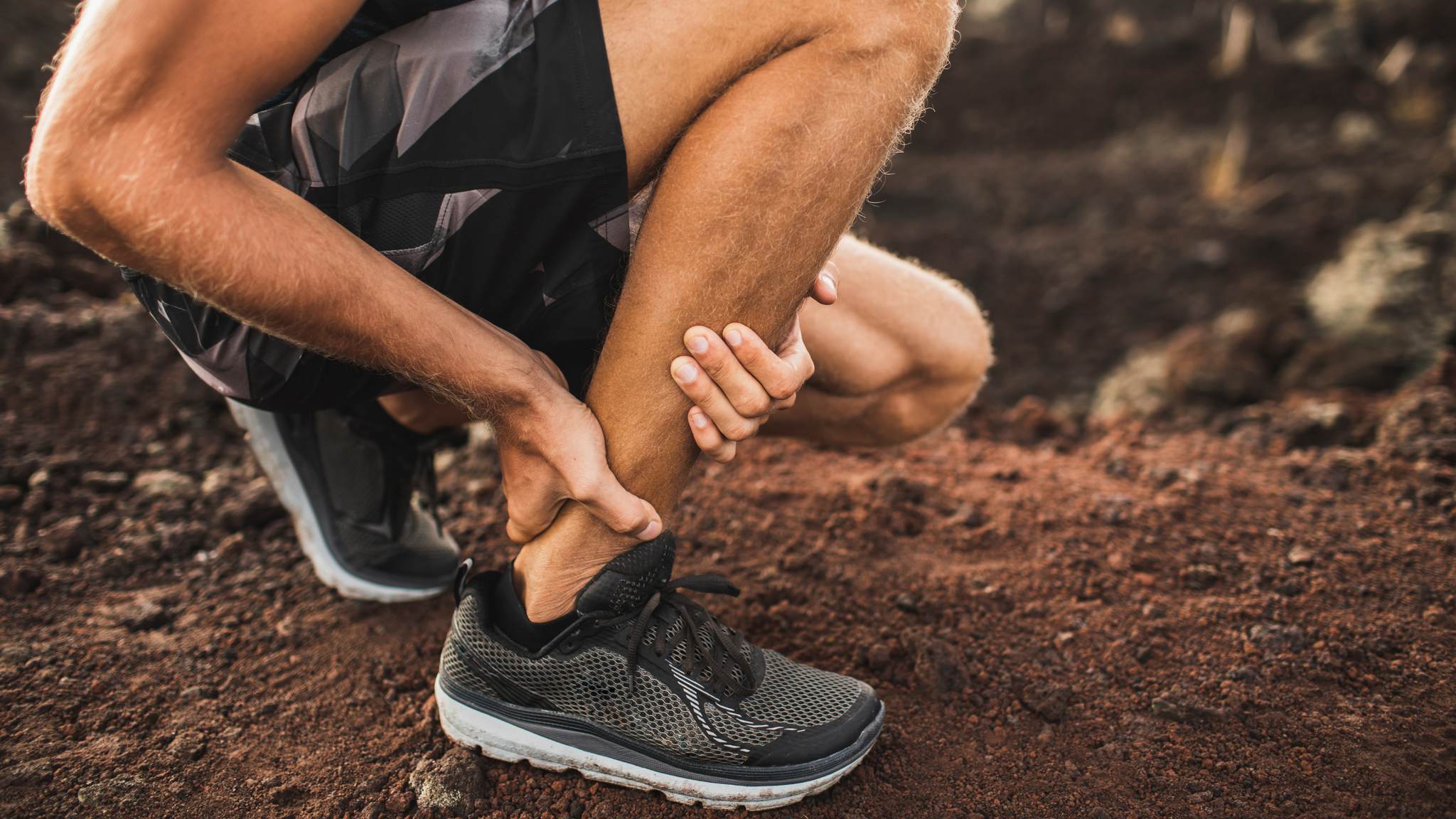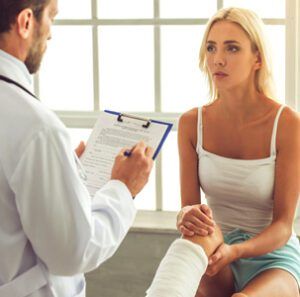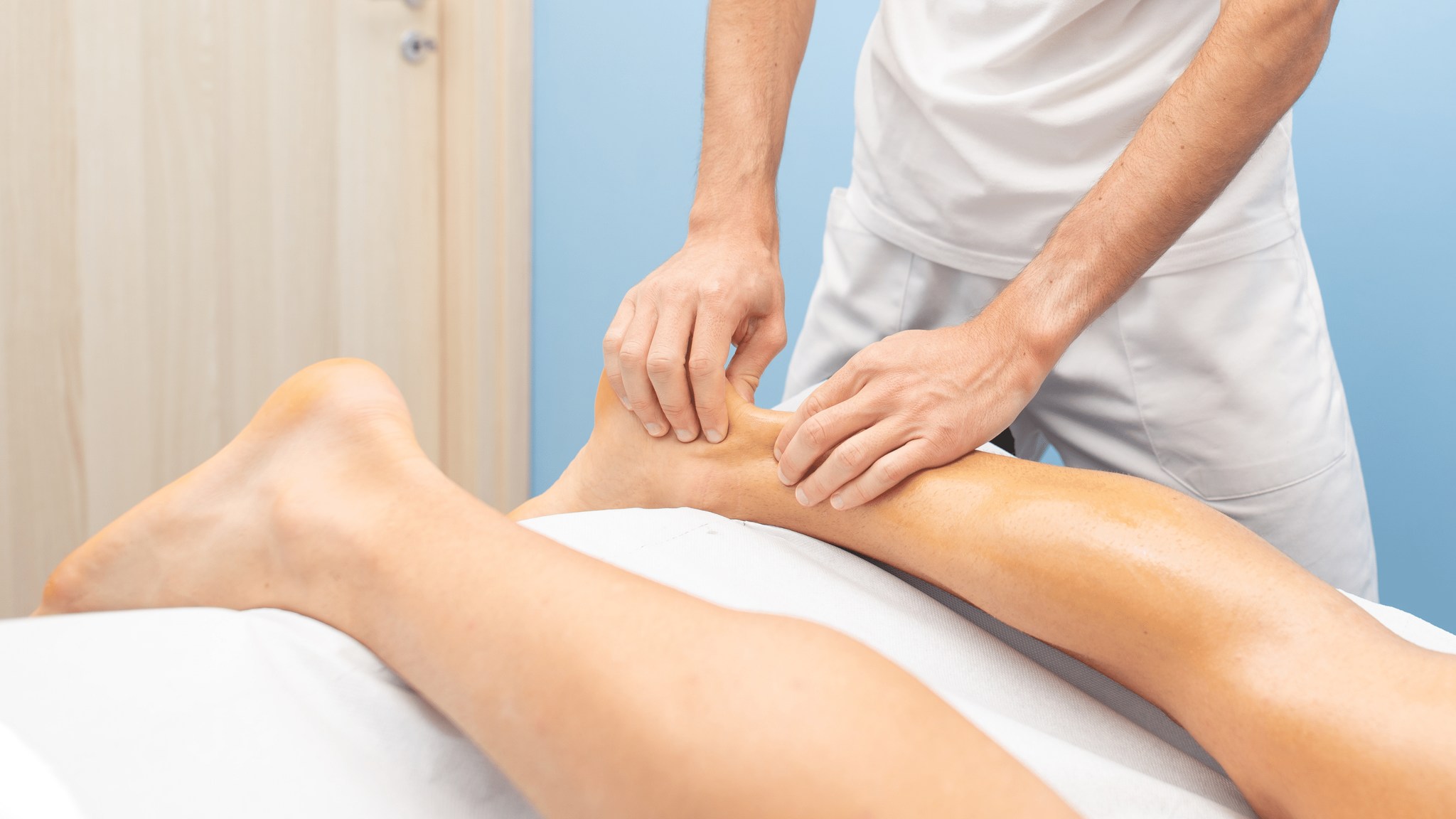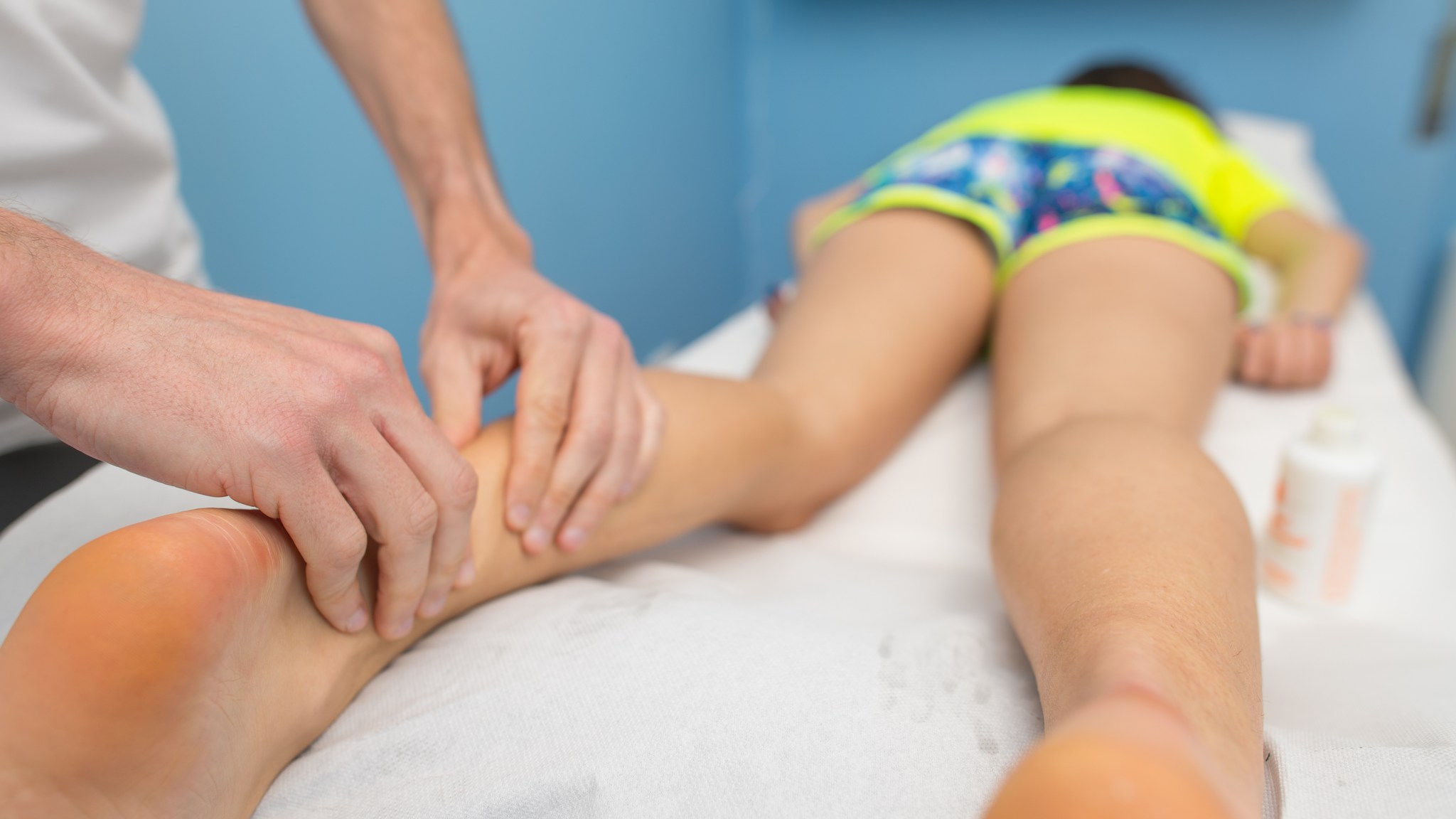Torn Achilles tendon
Torn Achilles tendon -Professional treatment in children and adults
Torn Achilles tendon – Lack of physical activity, certain diseases, as well as medications, can weaken its strength and thus predispose to its damage. What symptoms can indicate a ruptured Achilles tendon? If you would like to learn more about the diagnosis, treatment and rehabilitation of an injured heel tendon used at Medi Horizon Clinic, keep reading!
Diagnosis process of a ruptured Achilles tendon in Warsaw
The primary means of diagnosing an Achilles tendon rupture is a thorough review of the mechanism of injury and a palpation examination combined with diagnostic tests. During the physical examination, the orthopedic surgeon carefully examines and applies pressure to the heel tendon area, and checks its continuity. Symptoms, such as severe pain, swelling in the calf area, and restriction of foot mobility, are indicative of an Achilles rupture. The Thompson test is extremely helpful.
During it, the patient lies on his stomach on a recliner, and the doctor flexes the lower limb at the knee joint. He then applies pressure to the posterior calf muscles, which correctly should cause soleus flexion at the ankle joint. The absence of this reflex and the appearance of severe pain are indicative of an Achilles rupture. To confirm the diagnosis, the orthopedic surgeon performs an ultrasound examination to assess the continuity and structure of the heel tendon. If he deems it necessary, he may also order an MRI.
At Medi Horizon Clinic, surgical, preventive treatment and rehabilitation are provided by experienced orthopedic specialists

Frequently asked questions:
-
What is the Achilles tendon?
The Achilles tendon, otherwise known as the heel tendon, is the largest and also the strongest tendon in the human body, which derives its name from the mythical hero from under Troy – Achilles. It is located in the posterior part of the shin, where it extends between the calf and the heel. It is formed by the tendon of the gastrocnemius muscle and the sheath muscle, which together form the triceps calf muscle. The Achilles tendon is about 15 cm long and 5 mm thick. It ends with a wide attachment at the calcaneal tuberosity.
It performs an extremely important function during walking and running, as it enables sole flexion at the ankle joint, which allows the foot to lift and smoothly transfer body weight. Among other things, it is to it that we owe the ability to stand on our toes. The heel tendon is formed of strong fibrous tissue. Due to its poor blood supply, it is particularly susceptible to ruptures, tears and other damage. Injuries to this structure impair the mechanics of the lower limb and, consequently, the normal gait pattern
-
What could be the causes of Achilles tendon rupture or tear?
Well, the Achilles tendon, like any structure of its kind in the human body, can be damaged if too much force is applied to it. An injury to the heel tendon can be acute or chronic. The former is the most common injury seen in athletes. Typically, acute rupture of the Achilles tendon occurs in people who participate in sports that require a strong push off of the foot, such as divers, soccer players or runners.
Damage to the heel tendon can accompany a sprain or dislocation of the ankle joint. This occurs as a result of sudden and excessive dorsal (upward) flexion of the foot, which causes the tendon to stretch unexpectedly and tear or rupture. Such an injury is not difficult to occur in people who lead sedentary lifestyles. It promotes the formation of contractures in the calf muscles. Rupture of the Achilles in this group is usually the result of inadequate physical activity, which is most often not preceded by a warm-up.
In addition, damage to the heel tendon can also be chronic. Then it is the result of pathological factors acting on it for a long time, which weaken its strength. These include:
- chronic inflammatory processes involving the heel tendon or its sheath,
- systemic diseases such as gout, systemic lupus erythematosus,
- Cushing’s syndrome or rheumatoid arthritis,
- tendinopathies, or chronic pain syndromes caused by recurrent a recurrent tendon overload,
- long-term intake of oral corticosteroids in anti-inflammatory doses,
- injection of steroid preparations in the vicinity of the Achilles tendon,
- intake of antibiotics from the fluoroquinolone group by children.
Achilles tendon rupture most often occurs in men between the ages of 30 and 40. Usually the injury occurs in the left leg.

Torn Achilles tendon
-
What are the symptoms? of a torn Achilles tendon
Chronic damage to the Achilles tendon, which can cause its rupture, manifests itself in long-lasting pain of moderate intensity and swelling of the area. The discomfort worsens after physical activity. However, a large group of patients do not feel any symptoms. Then the first sign of damage to the Achilles tendon may be the appearance of complaints indicative of its rupture. Characteristic symptoms include:
- A sudden snap and severe pain radiating to the heel,
- a feeling as if someone had hit the calf,
- inability to walk, limping,
- inability to stand on tiptoe,
- swelling,
- increased warmth,
- hematoma.
If the symptoms mentioned above appear, you should immediately go to the orthopedic emergency room. The leg with a ruptured Achilles should be relieved as much as possible, do not stand on it and limit its mobility. Symptoms indicative of chronic damage rather than rupture of the Achilles tendon require a scheduled consultation at an orthopedic clinic. For this, you can make an appointment with one of our specialists at Medi Horizon Clinic in Warsaw. We also offer assistance in urgent cases, which include Achilles tendon rupture.
-
What does rehabilitation look like?
In order to achieve the best possible mobilty after an Achilles tendon injury, rehabilitation is essential. During the first week after surgery of torn Achilles tendon, until the sutures are removed and the patient is immobilized, we recommend using elbow crutches and not putting any weight on the operated leg. During the follow-up visit, the orthopedic surgeon will remove the stitches and recommend further rehabilitation. Its goal is to restore full mobility of the ankle joint, strengthen the triceps calf muscle and activate the scar after surgery. The rehabilitation process takes place under the guidance of a qualified physiotherapist.

Torn Achilles tendon
-
How long does the recovery take?
Torn Achilles tendon – The recovery period after an Achilles tendon injury depends on the severity of the injury, the treatment, and the course of the postoperative period. It takes time to achieve the full effects of both conservative and surgical treatment. It usually takes about 6 months to return to full activity. Throughout this period, our patients are under the supervision of one of our orthopedic doctors.
At Medi Horizon Clinic in Warsaw, we offer modern and minimally invasive procedures for the treatment of damaged Achilles tendon. We are distinguished by our individual approach to each patient. Our doctors select the appropriate methods of treatment and correction taking into account the patient’s requirements. Come in for a consultation with one of our Specialists!
Discover our competitive rates for the procedure tailored to your specific needs.
| Procedure | Approximate price |
| Torn Achilles tendon | 6000 dollars |
Prices listed are approximate and do not constitute a formal offer under the Civil Code. Final costs are tailored to individual treatment needs, including length of stay, choice of implant, rehabilitation, specialized care, dietary preferences, and the patient’s condition.
Summary
What is the treatment of a ruptured Achilles at Medi Horizon Clinic?
Depending on the degree of damage to the Achilles tendon, as well as the patient’s preference, conservative or surgical treatment can be used. Sudden rupture of the heel tendon usually requires urgent surgery. It can be carried out in two ways – open and minimally invasive method. Both have similar effectiveness.
At Medi Horizon Clinic, we prefer a minimally invasive method of reconstructing a damaged Achilles tendon. It involves making several small incisions on both sides of the tendon, through which the orthopedist brings the severed ends together using sutures. This makes it possible to restore the continuity of this structure and improve the stability of the foot. An additional advantage of this method is a shorter recovery period and faster healing. The procedure is performed under subarachnoid or general anesthesia. It lasts about 2h.
After surgery, the ankle joint is immobilized in the sole flexion position with a cast or special orthosis. Before the operation, the patient is given a full antibiotic cover and anticoagulant prophylaxis. We also take care of proper hydration and postoperative pain reduction. After the surgery, the patient remains in our clinic under the observation of a qualified nursing team headed by an orthopedic doctor. The next day, after receiving recommendations for further rehabilitation, he can go home.
Treatment of a ruptured Achilles without surgery
Conservative treatment is the method used mainly for partial damage to the Achilles tendon. In the situation of complete rupture of this structure, this method of therapy is preferred among elderly patients with contraindications to surgery. Conservative treatment consists in temporary immobilization of the leg with a plaster or a special orthosis.
Many people wonder how long it takes for the Achilles tendon to knit together? Typically, the process takes about 10 weeks. During this time, a scar forms at the site of the injury, which allows you to walk properly and perform sports with some restrictions. Keep in mind that it is not as durable as a normal tendon. To speed up the healing process, the orthopedic surgeon may consider injecting growth factor preparations and stem cells into the tendon area. As with surgery, rehabilitation is essential.
Our strenghts

- Experienced Doctors
- Personalized Treatment
- Holistic Approach
- Quality and Safety
- Convenient Location
- Free Parking
- Immediate Service in Urgent Cases
- Modern Equipment
- Comfortable Conditions
Sign up for a consultation!
Sign up for a consultation! Qualifying for the procedure today and find out how we can assist you. tel. +48 530 763 608
Admission to Medi Horizon Clinic
Step 1 – Get in touch with us
Contact Registration Medi Horizon Clinic by telephone- +48 530 763 608 or via e-mail – rejestracja@medihorizon.pl and get comprehensive information.
Step 2 – Consultation Visit
Qualification for the procedure requires a standard consultation with a specialist doctor, who conducts a detailed medical interview and selects the appropriate treatment or correction method.
Step 3 – Decision of the Patient and Doctor
The doctor makes the decision whether the procedure is feasible and safe for the Patient. Explains to the Patient how the procedure will proceed, determines the scope, and the price. Then, the date for the anesthesiological qualification and the procedure itself is determined.
Step 4 – Procedure and Stay at Medi Horizon Clinic
We attach great importance to the optimal choice of anesthesia for the surgical procedure, management of postoperative pain, and appropriate patient regeneration and rehabilitation. The patient is constantly cared for by qualified medical staff.



